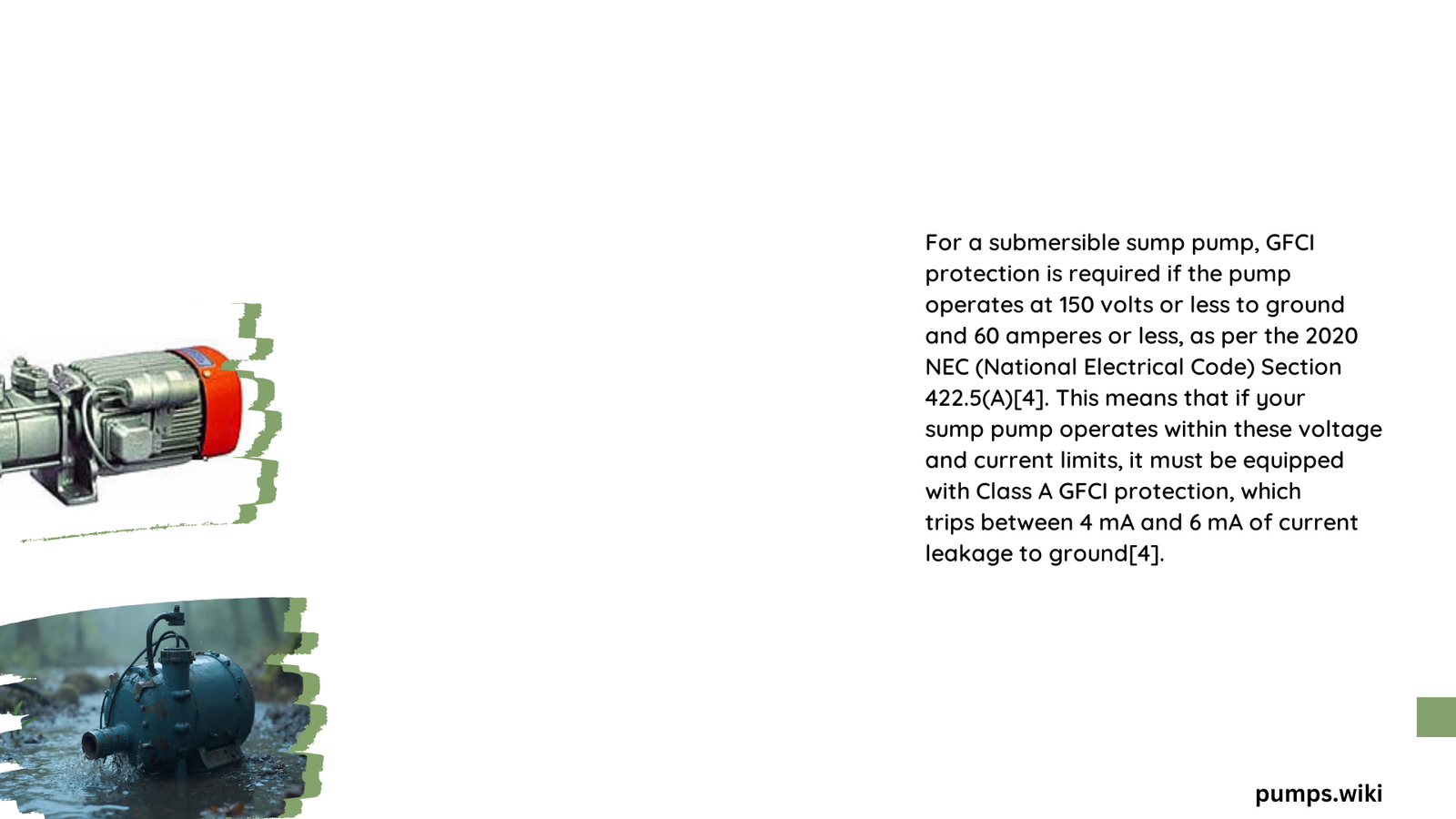Navigating the electrical requirements for submersible sump pumps demands precise understanding of GFI amperage specifications. Homeowners and professionals must comprehend the intricate balance between pump performance, circuit protection, and safety standards to ensure optimal functionality and prevent potential electrical hazards in residential and commercial settings.
What Are the Basic GFI Amperage Requirements for Submersible Sump Pumps?
Understanding Electrical Specifications
Submersible sump pumps typically operate within specific electrical parameters that demand careful consideration. The primary factors influencing GFI amperage include:
- Voltage Rating: Predominantly 120V systems
- Amperage Draw: Usually between 5-10 amps
- Circuit Protection: Typically 15A or 20A GFCI breakers
Detailed Amperage Breakdown
| Pump Horsepower | Typical Amperage Range | Recommended Circuit |
|---|---|---|
| 1/3 HP | 4-6 amps | 15A GFCI |
| 1/2 HP | 6-8 amps | 20A GFCI |
| 3/4 HP | 8-10 amps | 20A GFCI |
Why Precise GFI Amperage Matters?
Electrical safety represents the cornerstone of proper sump pump installation. Incorrect amperage selection can lead to:
- Potential electrical system overload
- Increased risk of ground fault incidents
- Compromised pump performance
- Potential equipment damage
How Do National Electrical Codes Impact Sump Pump GFI Requirements?

The National Electrical Code (NEC) provides comprehensive guidelines for electrical installations, specifically addressing submersible sump pump requirements:
- GFCI protection mandatory for circuits 150V or less to ground
- Amperage rating must not exceed 60A
- Installation location determines additional protection needs
Critical Compliance Factors
Professionals must consider:
– Basement moisture levels
– Proximity to water sources
– Local building regulations
– Manufacturer’s specific recommendations
What Determines the Appropriate GFCI Breaker Selection?
Selecting the correct GFCI breaker involves multiple considerations:
Key Selection Criteria
- Maximum amperage draw of the pump
- Startup current requirements
- Potential additional circuit loads
- Environmental installation conditions
Practical Recommendations
- Always consult manufacturer specifications
- Use dedicated circuits when possible
- Implement professional electrical assessment
- Consider future pump replacement scenarios
What Are Common Installation Mistakes to Avoid?
Electrical professionals frequently encounter installation errors related to GFI amperage for submersible sump pumps:
- Undersizing circuit breakers
- Neglecting ground fault protection
- Ignoring manufacturer amperage specifications
- Improper wiring configurations
Expert Mitigation Strategies
- Conduct thorough electrical load calculations
- Utilize professional-grade testing equipment
- Maintain comprehensive documentation
- Schedule periodic electrical system inspections
Conclusion: Ensuring Safe and Efficient Sump Pump Operation
Proper understanding of GFI amperage requirements represents a critical aspect of submersible sump pump installation and maintenance. By adhering to established electrical standards and manufacturer guidelines, homeowners can ensure optimal performance and long-term reliability.
Final Recommendations
- Prioritize professional installation
- Understand specific electrical requirements
- Invest in high-quality electrical components
- Maintain regular system inspections
Reference:
– National Electrical Code
– Electrical Safety Foundation International
– Occupational Safety and Health Administration
